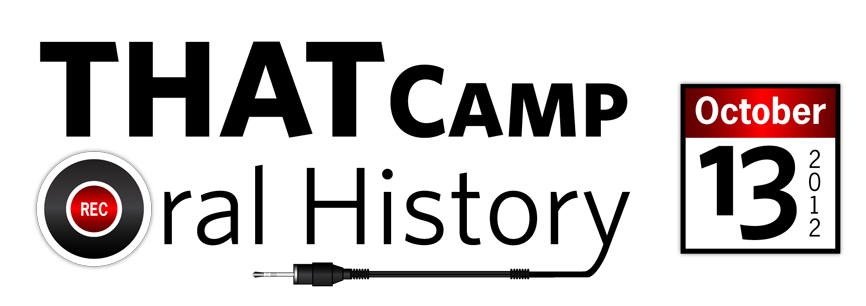After the first year of developing and starting an oral history project, I felt immediately pressured for more, more MORE! While I was done and happy for the year; the initial interviews and photos were now stored, they would one day be archived, and the project would continue the following year, the students and seniors and those in my university community seemed surprised that, that was it. So, I started using the photographs and audio from the interviews in order to create an annual video recap. (The second year, I got a lot fancier.) This has managed to drum up support from all angles, and they are very fun to show, but it is not the direction I originally saw for the project. I would love to explore how others have reconstituted their oral histories, why we’ve done it, how we’ve done it and the pros and cons of doing so.

THATCamp Oral History Association 2012
The Humanities and Technology Camp
Hi Shannon, this sounds like an interesting session. At CPHDH we’ve re-used our interview audio in a whole variety of ways (YouTube, mobile apps, touch screen kiosks, etc). I agree that this type of re-use can really be helpful in selling outsiders on the value of collecting the interviews in the first place. It’s a lot easier to show value through highlights, clips, and other more easily-digested re-constitutions than it is to just assure someone (who may never listen to those hundreds of hours of audio) that this is all worth collecting and preserving.
Erin, your re-uses are fantastic. They serve to expand and enhance the oral histories. And, yes, exactly, sometimes this re-purposing may be the only way that people actually encounter these interviews. Perhaps, it’s something we should all be doing?
What I like best is that you were willing to go a new direction based on the interests of your various stakeholders. Maybe we could all discuss the unforeseen developments in our projects that were influenced by people who are excited about the work and want to have a hand in shaping it.